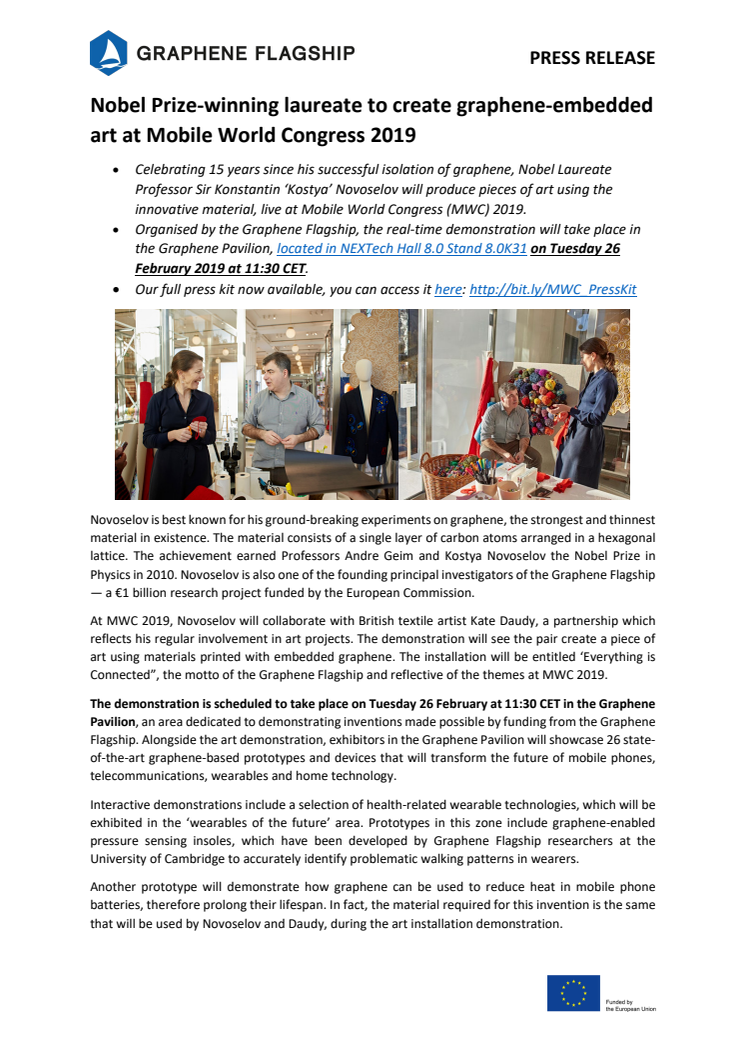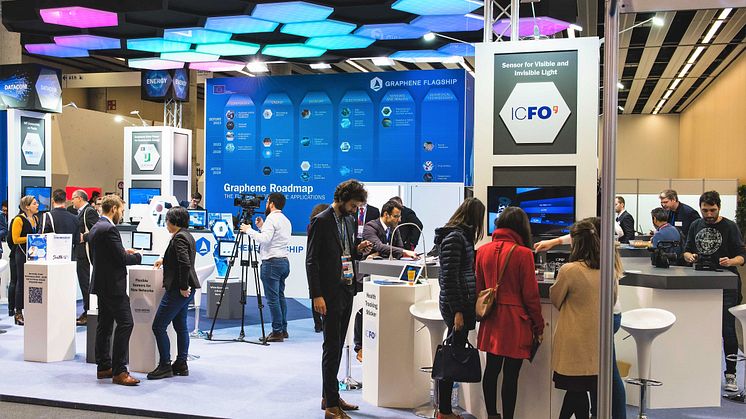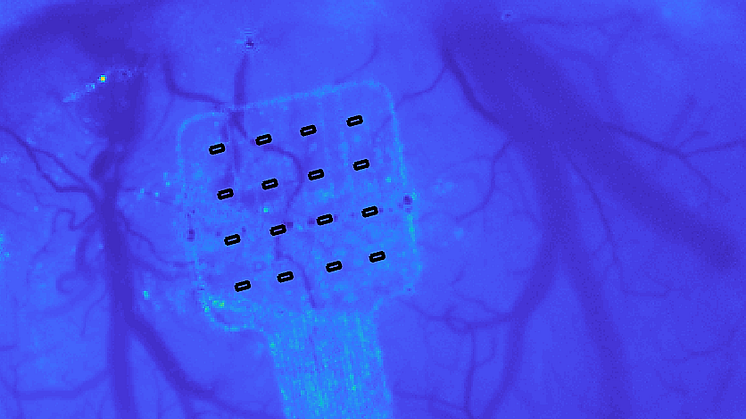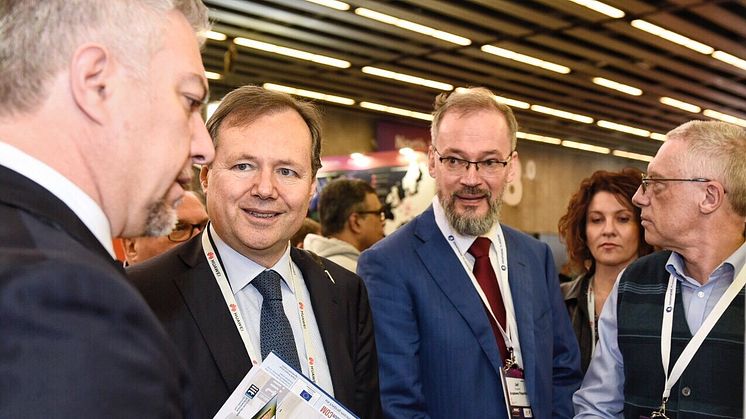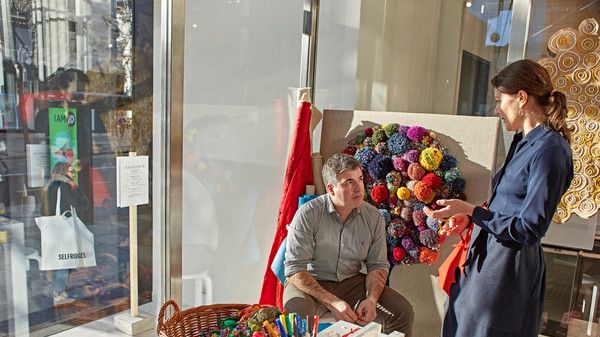
Press release -
Nobel laureate Kostya Novoselov will create graphene-embedded art at Mobile World Congress 2019
Organised by the Graphene Flagship, the real-time demonstration will take place in the Graphene Pavilion of MWC19, located in NEXTech Hall 8.0 Stand 8.0K31 on Tuesday 26 February 2019 at 11:30 CET.
Novoselov is best known for his ground-breaking experiments on graphene, the strongest and thinnest material in existence. The material consists of a single layer of carbon atoms arranged in a hexagonal lattice. The achievement earned Professors Andre Geim and Kostya Novoselov the Nobel Prize in Physics in 2010. Novoselov is also one of the founding principal investigators of the Graphene Flagship — a €1 billion research project funded by the European Commission.
At MWC 2019, Novoselov will collaborate with British conceptual artist Kate Daudy, a partnership which reflects his regular involvement in art projects. The demonstration will see the pair create a piece of art using materials printed with embedded graphene. The installation will be entitled ‘Everything is Connected”, the motto of the Graphene Flagship and reflective of the themes at MWC 2019.
The demonstration is scheduled to take place on Tuesday 26 February at 11:30 CET in the Graphene Pavilion, an area dedicated to demonstrating inventions made possible by funding from the Graphene Flagship. Alongside the art demonstration, exhibitors in the Graphene Pavilion will showcase 26 state-of-the-art graphene-based prototypes and devices that will transform the future of mobile phones, telecommunications, wearables and home technology.
Interactive demonstrations include a selection of health-related wearable technologies, which will be exhibited in the ‘wearables of the future’ area. Prototypes in this zone include graphene-enabled pressure sensing insoles, which have been developed by Graphene Flagship researchers at the University of Cambridge to accurately identify problematic walking patterns in wearers.
Another prototype will demonstrate how graphene can be used to reduce heat in mobile phone batteries, therefore prolong their lifespan. In fact, the material required for this invention is the same that will be used by Novoselov and Daudy, during the art installation demonstration.

“Graphene and related layered materials have steadily progressed from fundamental to applied research and from the lab to the factory floor,” explained Andrea Ferrari, Science and Technology Officer and Chair of the management panel of the Graphene Flagship. “Mobile World Congress is a prime opportunity for the Graphene Flagship to showcase how the European Commission’s investment in research is beginning to create tangible products and advanced prototypes,” he adds.
Ferrari also highlights how “outreach is also part of the Graphene Flagship mission and the interplay between graphene, culture and art has been explored by several Flagship initiatives over the years.” “This unique live exhibition of Kostya is a first for the Flagship and the Mobile World Congress, and I invite everybody to attend,” he concludes.
More information on the Graphene Pavilion, the prototypes on show and the interactive demonstrations at MWC 2019, can be found on the Graphene Flagship website. Alternatively, contact the Graphene Flagship directly on press@graphene-flagship.eu.
Topics
Categories
About the Graphene Flagship
The Graphene Flagship is research, innovation and collaboration.
Funded by the European Commission, the Graphene Flagship aims to secure a major role for Europe in the ongoing technological revolution, helping to bring graphene innovation out of the lab and into commercial applications by 2023. The Graphene Flagship gathers nearly 150 academic and industrial partners from 23 countries, all exploring different aspects of graphene and related materials. Bringing diverse competencies together, the Graphene Flagship facilitates cooperation between its partners, accelerating the timeline for industry acceptance of graphene technologies. The European Commission’s FET Flagships enable research projects on an unprecedented scale. With €1 billion budgets, the Graphene Flagship, Human Brain Project and Quantum Flagship serve as technology accelerators, helping Europe to compete with other global markets in research and innovation.

